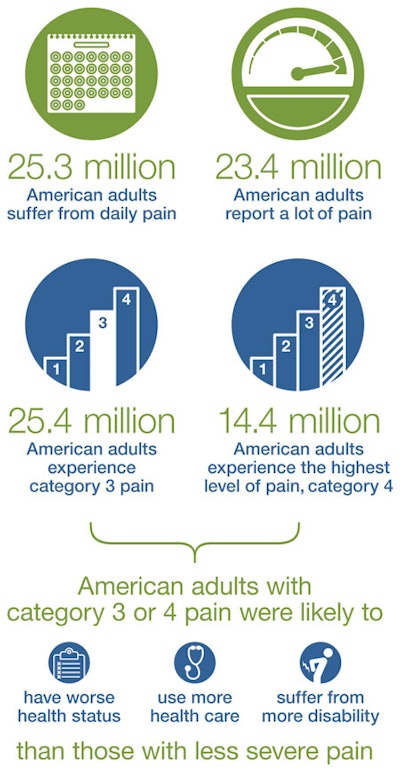An estimated 25.3 million American adults (11.2 percent) had pain every day in the three months preceding a national survey, and nearly 40 million adults (17.6 percent) experienced severe levels of pain.
An analysis of the 2012 National Health Interview Survey (NHIS) revealed associations between pain severity and race, ethnicity, language preference, gender, and age. The impact of gender on pain varied by race and ethnicity, NHIS results showed.
Women, older individuals, and non-Hispanics were more likely to report any pain, while Asians were less likely. The data also indicate that minority people who did not choose to be interviewed in English were markedly less likely to report pain.
A new analysis of the data also showed that those with severe pain are also likely to have worse health status.
“The number of people who suffer from severe and lasting pain is striking,” said Josephine P. Briggs, M.D., director of NCCIH. “This analysis adds valuable new scope to our understanding of pain and could inform the National Pain Strategy in the areas of population research and disparities. It may help shape future research, development, and targeting of effective pain interventions, including complementary health approaches.”
The analysis was funded by the National Institutes of Health’s National Center for Complementary and Integrative Health (NCCIH) and was published in The Journal of Pain.
The CDC’s NHIS is an annual study in which tens of thousands of Americans are interviewed about their health- and illness-related experiences. The 2012 NHIS asked participants about the frequency and intensity of pain experienced in the prior three months. The survey results are based on combined data from 8,781 American adults from a subsection of the larger NHIS.
Among the findings of the analysis:
– An estimated 23.4 million adults (10.3 percent) experience a lot of pain.
– An estimated 126 million adults (55.7 percent) reported some type of pain in the three months prior to the survey.
– Adults in the two most severe pain groups were likely to have worse health status, use more health care, and suffer from more disability than those with less severe pain. However, approximately half of individuals with the most severe pain still rated their overall health as good or better.
“This report begins to answer calls for better national data on the nature and extent of the pain problem,” said Richard L. Nahin, Ph.D., M.P.H., lead epidemiologist for NCCIH and author of the analysis. “The experience of pain is subjective. It’s not surprising then that the data show varied responses to pain even in those with similar levels of pain. Continuing analyses of these data may help identify subpopulations that would benefit from additional pain treatment options.”















